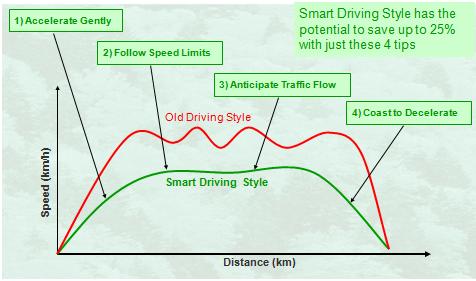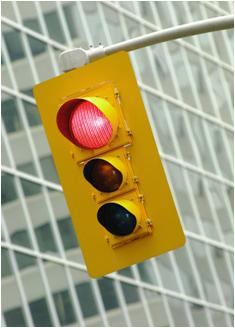The most effective habit change is avoiding quick starts and hard stops. According to a study referenced by Natural Resources Canada, aggressive driving only saves 2.5 minutes per hour in urban stop and go conditions, but can increase your gas consumption by as much as 35%. An aggressive driving style is also harder on your engine as well as other components including the transmission, brakes, and tires.
You pay more for gas, pay more for repairs, and increase your risk of an accident. A relaxed eco-driving style might cost you a few minutes, but it can save greatly on fuel consumption and is much safer too!
Here are some ways to drive smoothly and save:
- Accelerate gently: Accelerating is fuel intensive but so is driving in low gears. Get up to cruising speed at a moderate pace. Accelerate as if there is a hot cup of coffee that you don’t want to spill in the cup holder.
- Maintain a constant speed: Keep your momentum by coasting without the accelerator, and accelerating again when you are clear of obstacles. The fewer times you have to come to a complete stop, the better your mileage will be.
- Anticipate traffic flow: Watch well ahead and be aware of changing lights that will turn red before you get there.
- Coast to a stop: Driving quickly and hard braking at lights and stop signs wastes fuel and is hard on your vehicle. Releasing the accelerator when recognizing the need to slow down, stops the fuel supply and has the added bonus of reducing wear and tear on the brakes. Leave your vehicle in gear since coasting in neutral uses the same amount of gas as idling.

Source: Natural Resources Canada, 2009
Remember that shifting up to a higher gear as early as possible will also reduce your fuel consumption. With a manual transmission, you should be shifting between 1800 and 2500 r.p.m. With an automatic transmission, the best way to allow your vehicle to shift up to the next highest gear is simply by accelerating gently. Always use the highest gear possible so that you maintain low r.p.m.’s.




Recent Comments